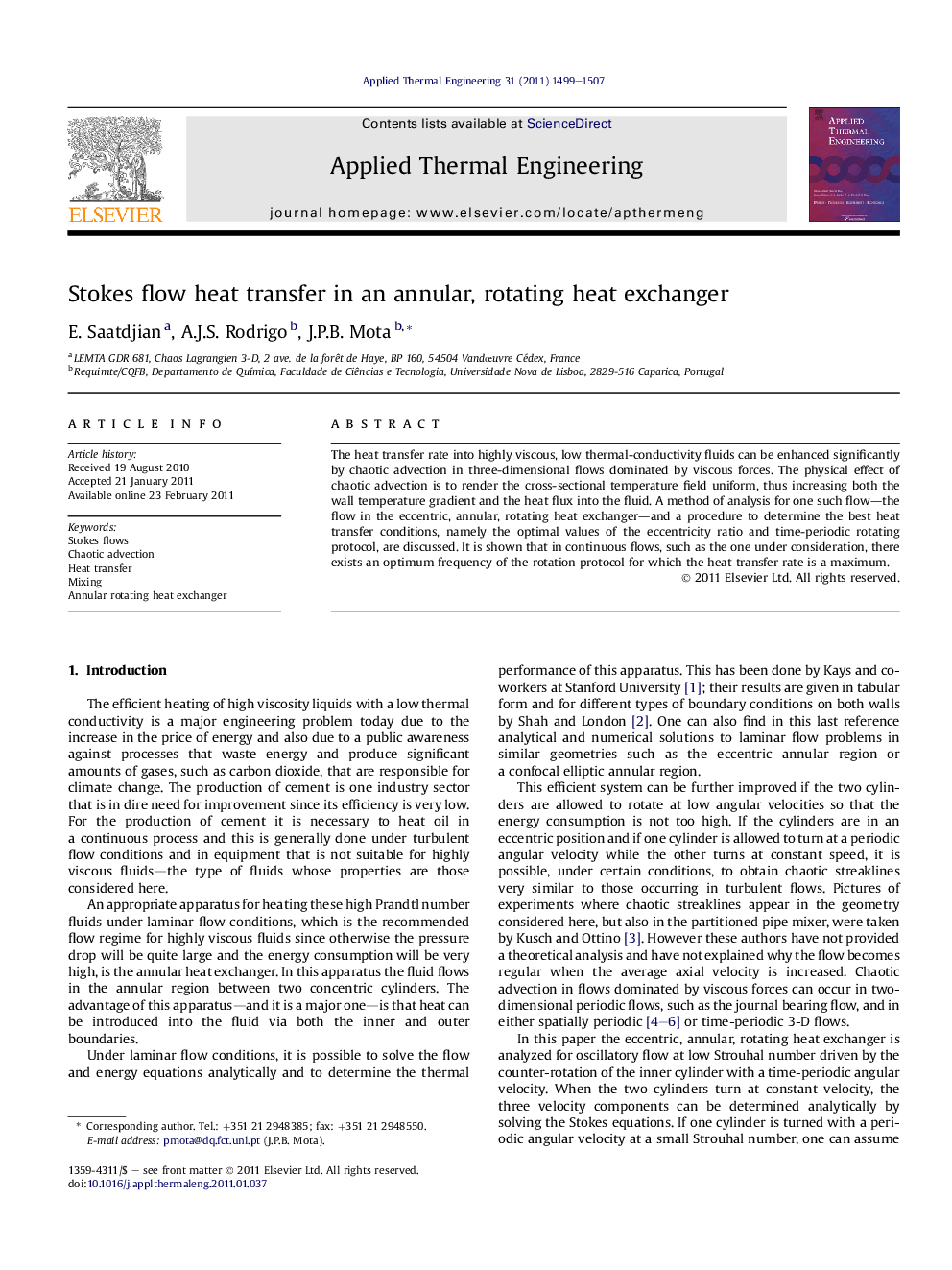| Article ID | Journal | Published Year | Pages | File Type |
|---|---|---|---|---|
| 647914 | Applied Thermal Engineering | 2011 | 9 Pages |
The heat transfer rate into highly viscous, low thermal-conductivity fluids can be enhanced significantly by chaotic advection in three-dimensional flows dominated by viscous forces. The physical effect of chaotic advection is to render the cross-sectional temperature field uniform, thus increasing both the wall temperature gradient and the heat flux into the fluid. A method of analysis for one such flow—the flow in the eccentric, annular, rotating heat exchanger—and a procedure to determine the best heat transfer conditions, namely the optimal values of the eccentricity ratio and time-periodic rotating protocol, are discussed. It is shown that in continuous flows, such as the one under consideration, there exists an optimum frequency of the rotation protocol for which the heat transfer rate is a maximum.
► The eccentric, annular, rotating heat exchanger is studied for periodic Stokes flow. ► Counter-rotating the inner tube with a periodic velocity enhances the heat transfer. ► The heat-transfer enhancement under such conditions is due to chaotic advection. ► For a given axial flow rate there is a frequency that maximizes the heat transfer. ► There is also an optimum value of the eccentricity ratio.
